Chanticleer’s eerie, mysterious Ruin Garden
Just before our picnic on the comfy stone sofa (no, really!), Diana and I explored the Ruin Garden at Chanticleer, a “pleasure garden” in Wayne, Pennsylvania.
The Ruin is a folly resembling an old, crumbling house that’s being overtaken by sapling trees, vines, and shrubs — the triumph of nature. But of course it’s all an illusion (the structure was built in 1999), enhanced with clever allusions. A ruined library with stone books entitled Woods, Thank Flora, and Moss reminds us of nature’s ultimate dominance. A dining hall is anchored by a water feature that evokes a banquet table and, disquietingly, a sarcophagus. Marble faces float just underwater in a small fountain, like drowned ghosts. It’s all a bit eerie, but in a magical, fairy-tale-forest sort of way.
Here’s the description from the garden’s website:
“Minder House, built in 1925, is where Adolph Rosengarten, Jr. lived most of his life. In 1999, under the vision and direction of Chanticleer’s Director Chris Woods, the house was razed and construction of the Ruin Garden began. Originally the plan was to use the partially dismantled house as the ruin, but for safety reasons the only part left of the original house is the foundation and the tile ‘rug.'”
Stepping inside, I entered the dining hall. A stone-and-slate mosaic “rug” lies beneath a watery banquet table…or is it a coffin?
A fireplace mantel at one end drips with succulents.
All that’s needed is ‘Sticks on Fire’ euphorbia in the fireplace grate.
The long view across the reflective table
Turning around, you see a room being swallowed by encroaching oaks, vines, ferns, and other opportunists. I wonder how much pruning the staff does to keep the space looking like it’s never been pruned, while still keeping the room somewhat open. Are sapling trees removed when they grow too large? I have questions.
An open window overlooks a sunny meadow.
On the opposite wall, a window frames a visitor strolling by.
It’s impossible to resist these framed views.
But the close-up views are pretty too, like this clematis climbing a stone pillar.
In the next room, a cluster of upright boxwood shrubs fill an open spot in the paving.
Snakebark maples (Acer davidii) sprout from two more paving gaps. At their feet and scattered around what seems to be an old library are stone books and tablets. Berkeley artist Marcia Donahue sculpted the stone artifacts throughout the Ruin.
Reminder reads one. Ex Libris, the other.
Woods — yes, soon
Fossils, Moss…and a curious, leafy face…
…looking right back!
One open book appears to be the story of an oak tree, with stone “acorns” pressed into the pages.
Another leafy face, with purple clematis scampering along the wall
Some engravings are more of a mystery, like Partial Polishment. Huh?
A small fireplace is tucked into one wall of the library, where Agave attenuata and other plants spring from crevices like living art.
A stone arch…
…leads out to a patio with more wall agaves and a tiered box planter filled with succulents.
‘Sharkskin’ agave, bulbine, aeonium, and other succulents fill the boxes, which appear to be made of slate.
A wider view
An old broken pot and metal stand are still serviceable as a succulent planter — a lesson in not throwing anything away.
A third room contains a small fountain and pool (in the corner). On two wooden posts, salvaged chains with buckets are planted with small succulents.
I bet those chains are heavy. Good thing they have sturdy posts on which to hang them.
Rusty metal and succulents are like peanut butter and chocolate. They’re made for each other.
The fountain draws your attention next.
Looking into the water, an unnerving sight…
…marble faces in the water. Smiling, seemingly in repose, they still kind of creep me out.
These two little girls took a good long look.
Just outside the wall, are those shambling ghosts, coming to visit their old home?
No, just weeping Norway spruces (Picea abies ‘Pendula’), but I feel sure they were chosen for their eerie, humanesque appearance.
A mass planting of prairie dropseed (Sporobolus heterolepis) softens one side of the Ruin.
At its edge, flame azalea, pond cypress, and ‘Dallas Blues’ switchgrass (I think) make a pretty combo.
A water fountain with a leaf-shaped basin continues the woodland theme of the Ruin.
On a pillow of prairie dropseed, a large sculpted head slumbers peacefully.
Zzzzzzzzzz
On the folly’s opposite side, a trio of straight-trunked pond cypresses (Taxodium distichum var. imbricatum) frames paving that breaks up into stepping stones as it leaves the Ruin. The path leads into Minder Woods, which I’ll show in my next and final post about this visit to Chanticleer.
Up Next: Chanticleer’s shady Minder Woods and a few parting scenes. For a look back at the gorgeous Gravel Garden, click here.
I welcome your comments; please scroll to the end of this post to leave one. If you’re reading this in a subscription email, click here to visit Digging and find the comment box at the end of each post.
_______________________
Digging Deeper: News and Upcoming Events

All material © 2006-2016 by Pam Penick for Digging. Unauthorized reproduction prohibited.


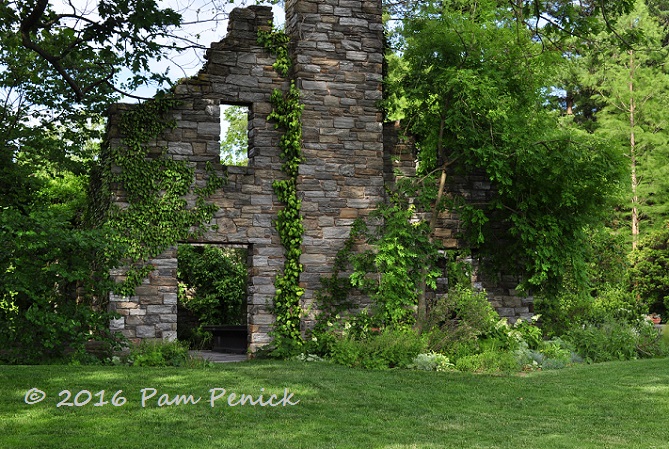
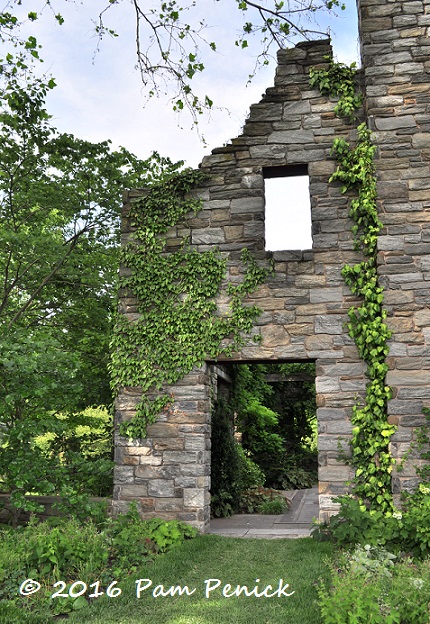
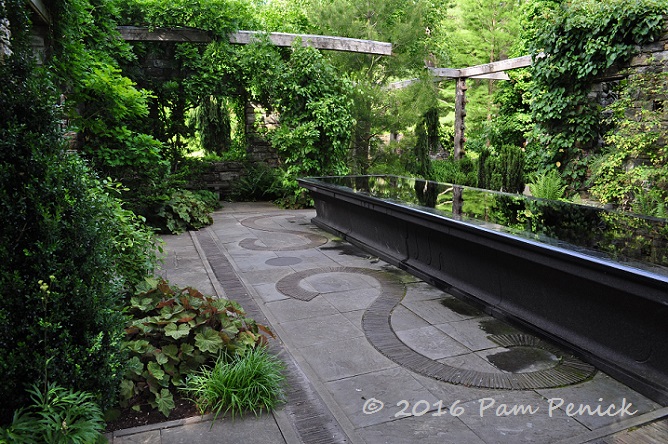
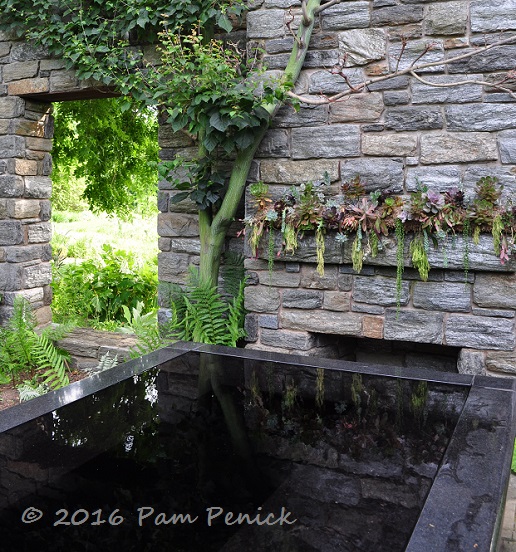
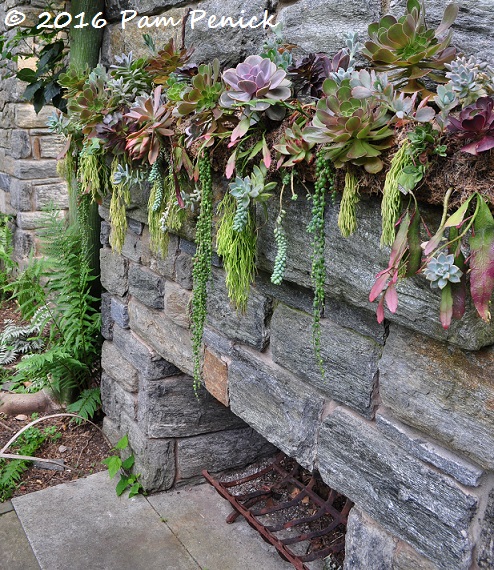
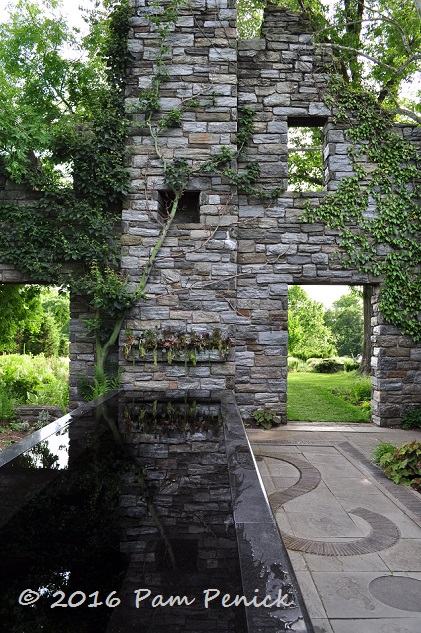
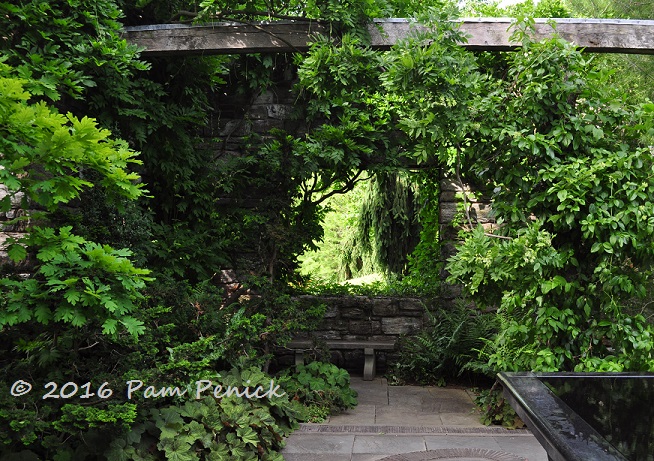
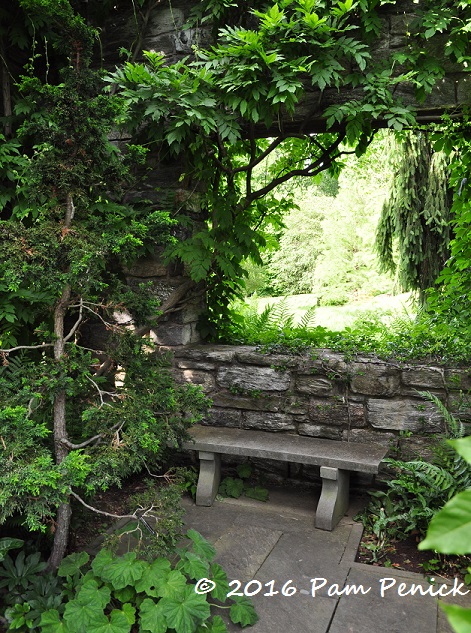
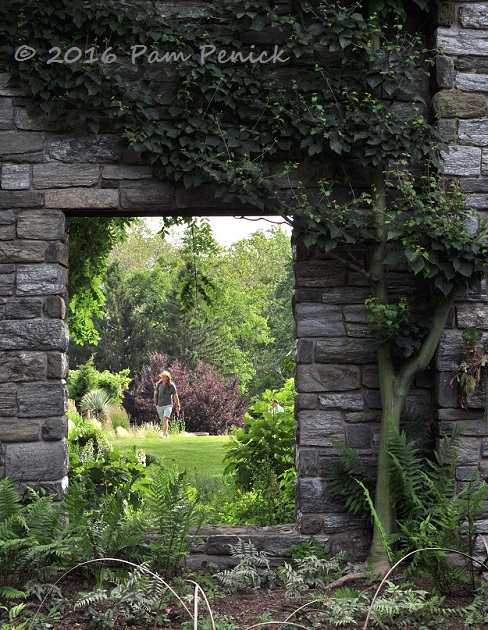
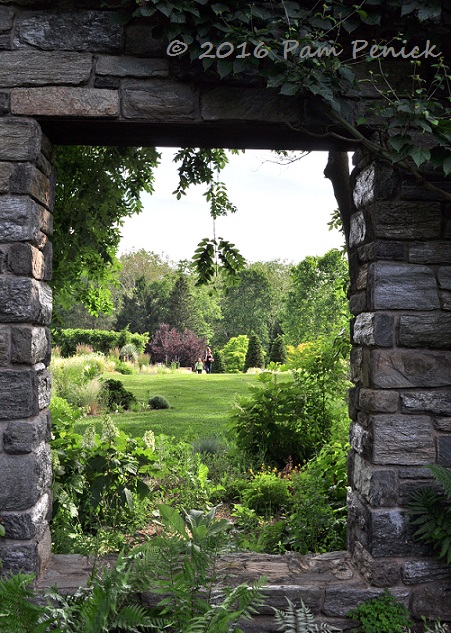
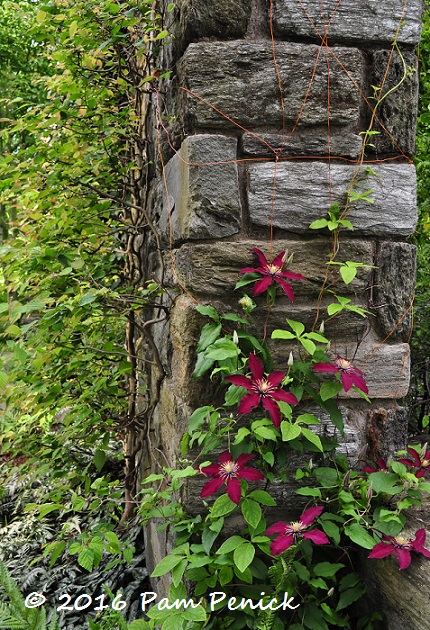
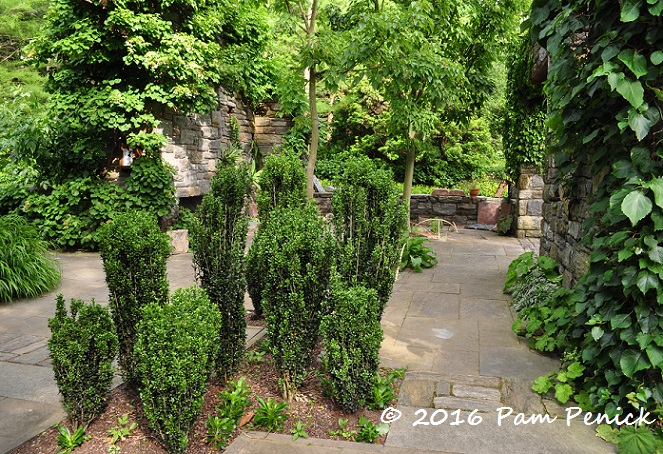
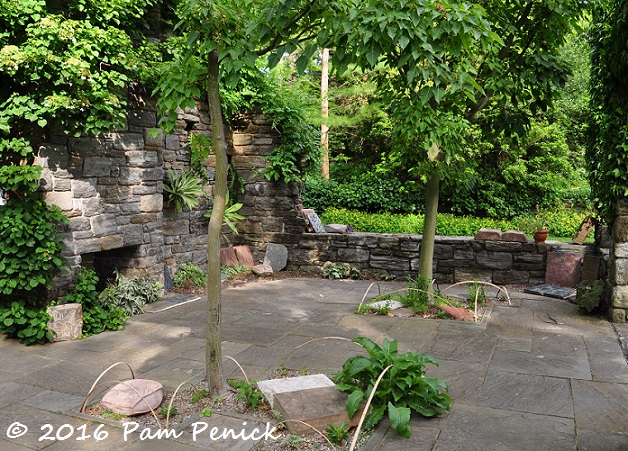
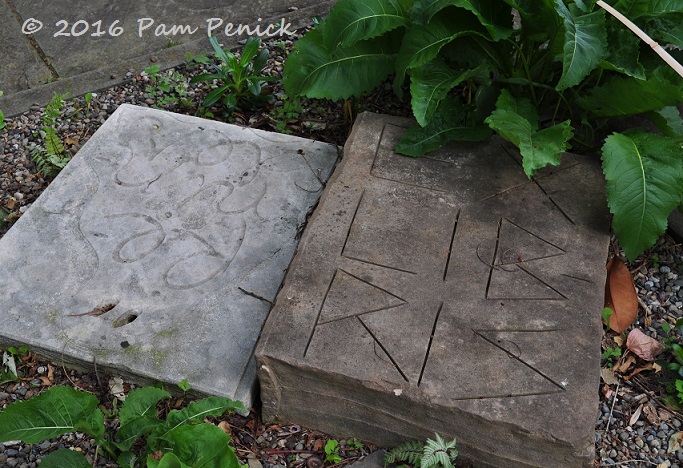
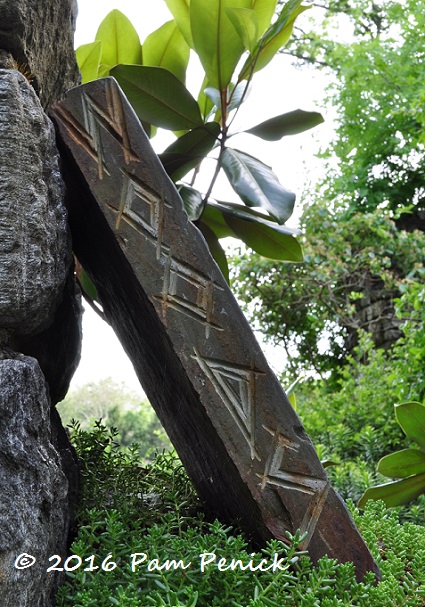
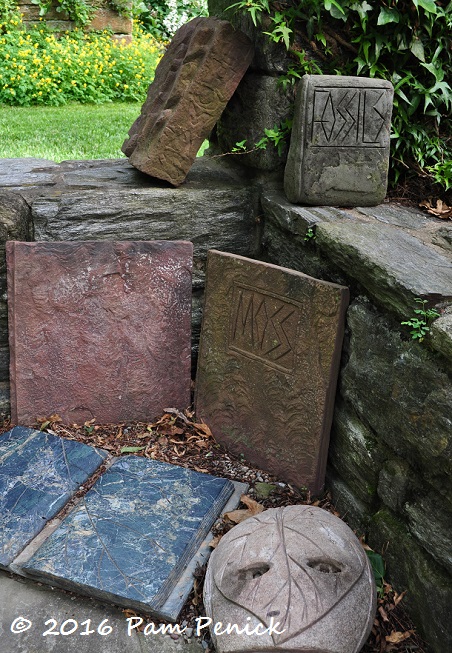
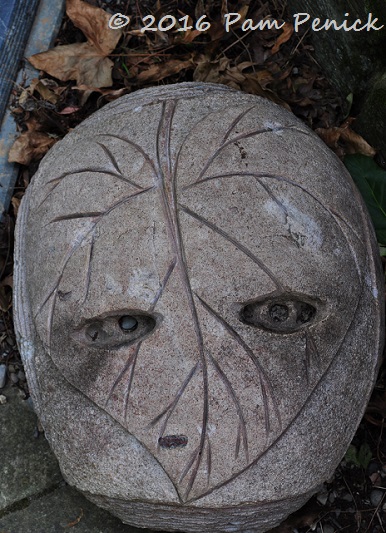
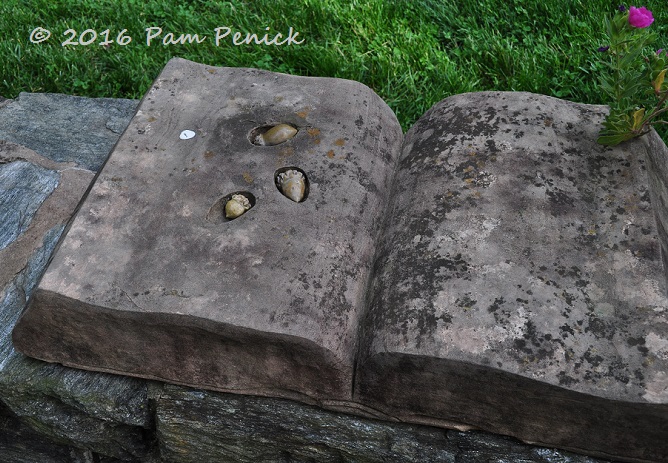
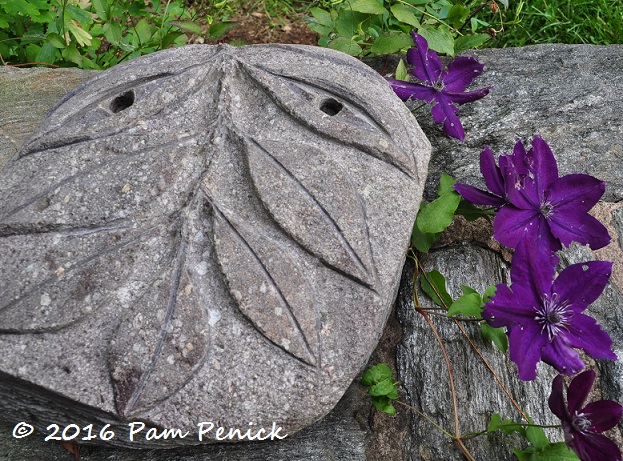
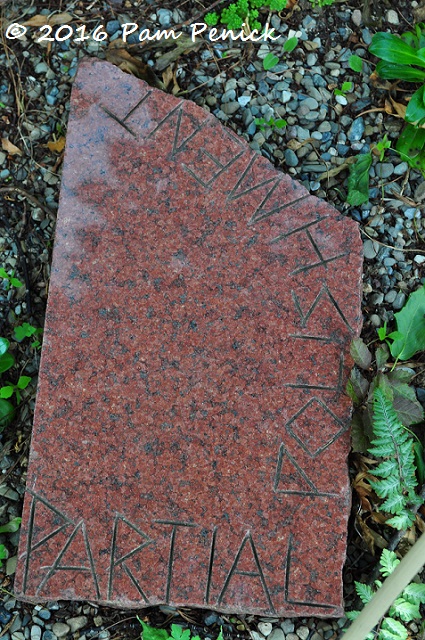
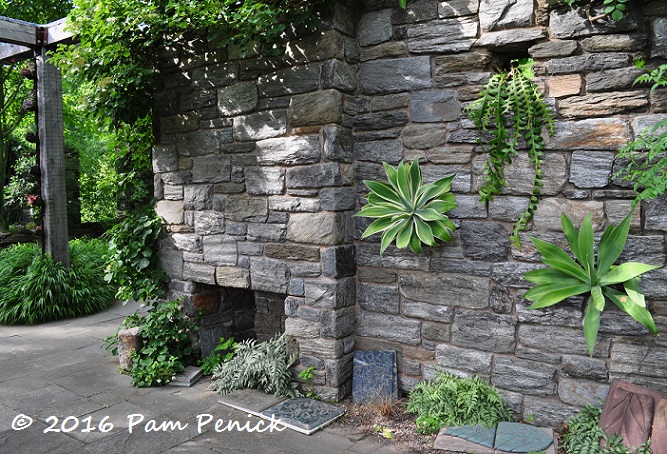
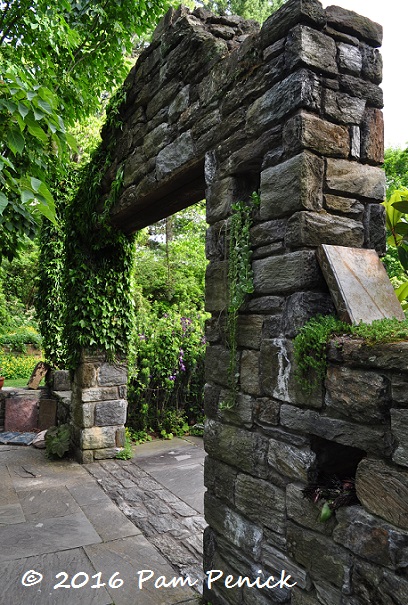
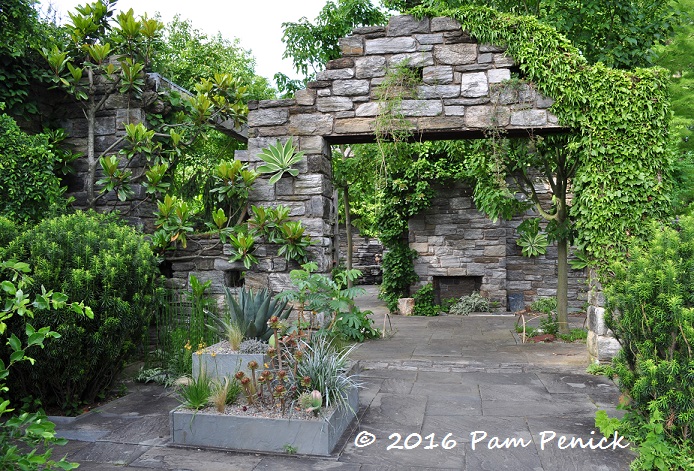
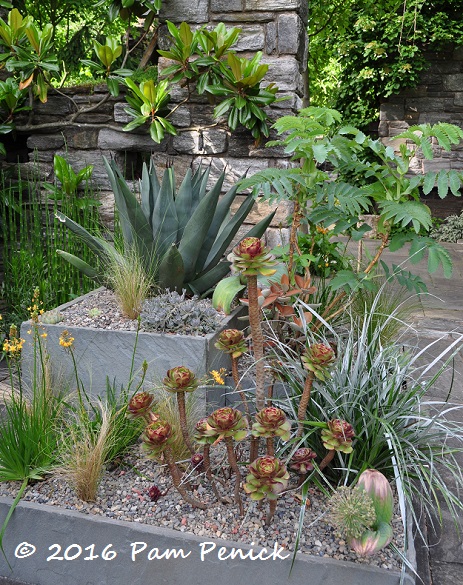
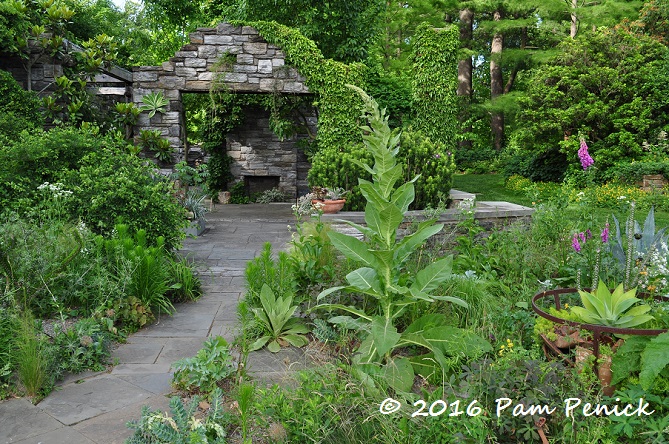
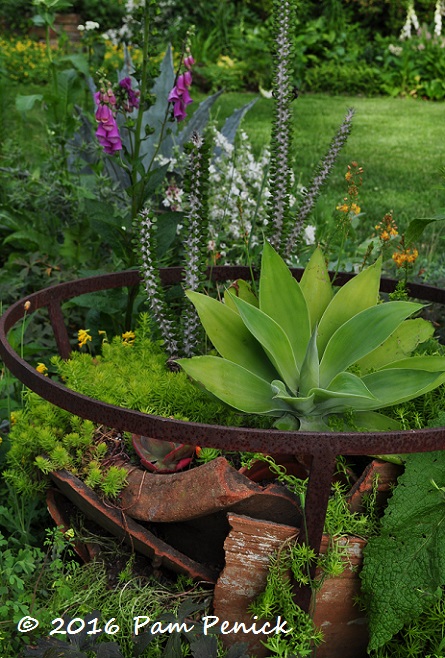
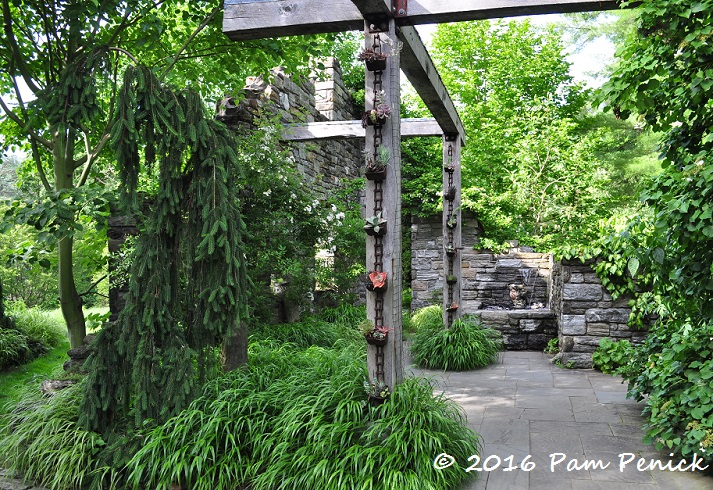
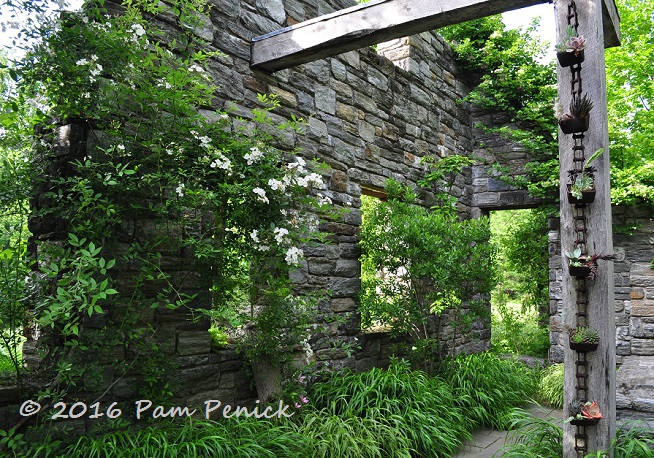
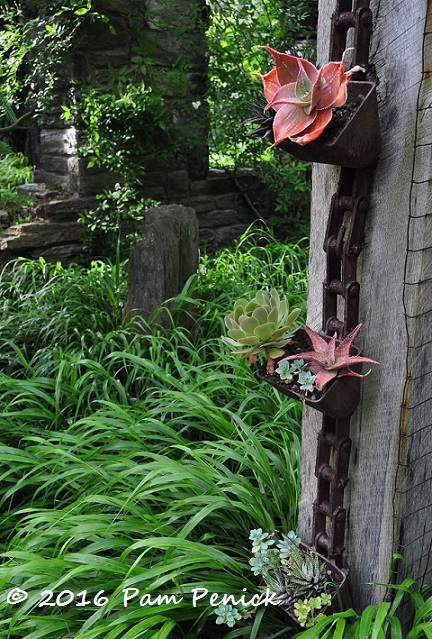
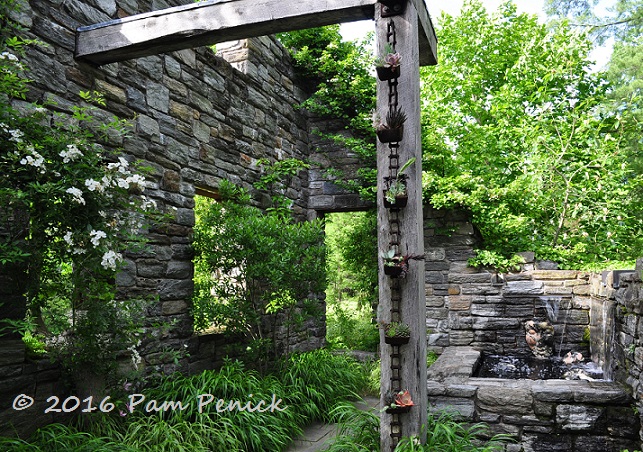
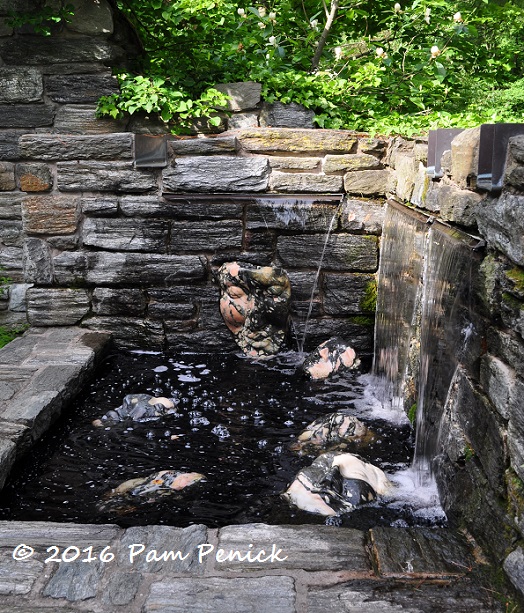
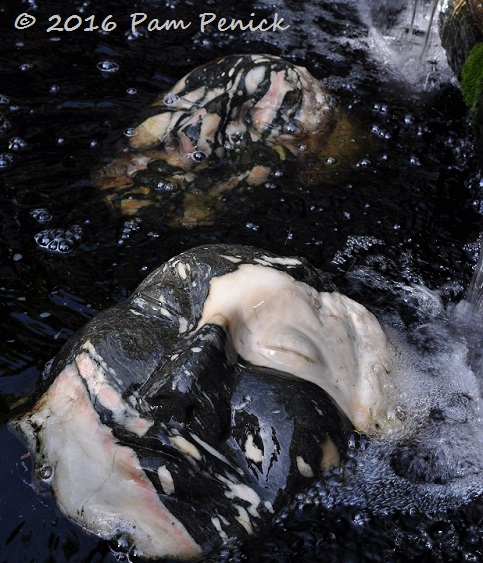
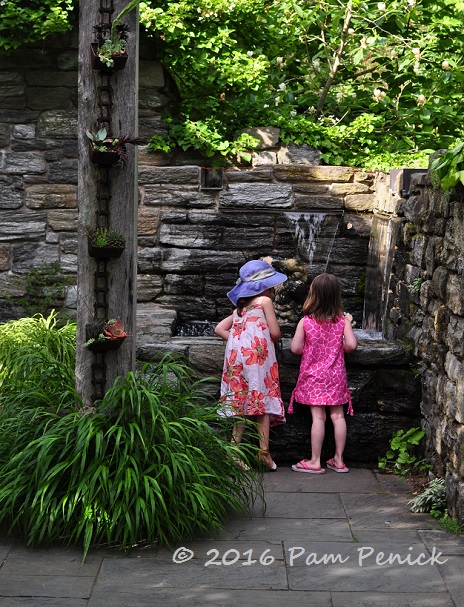
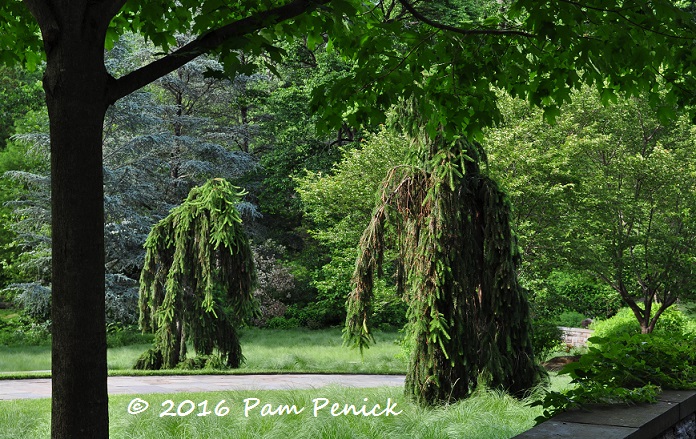
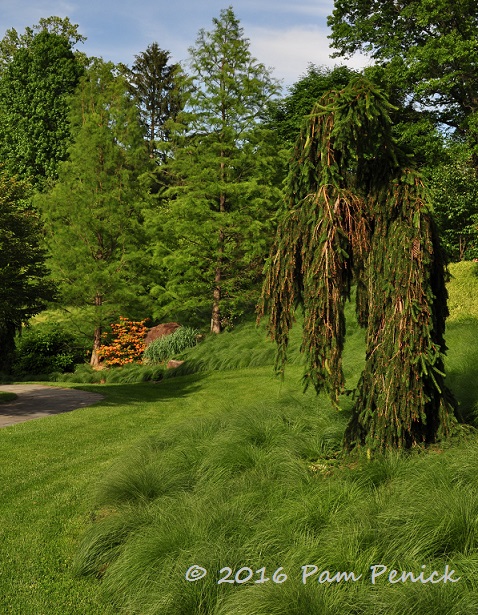
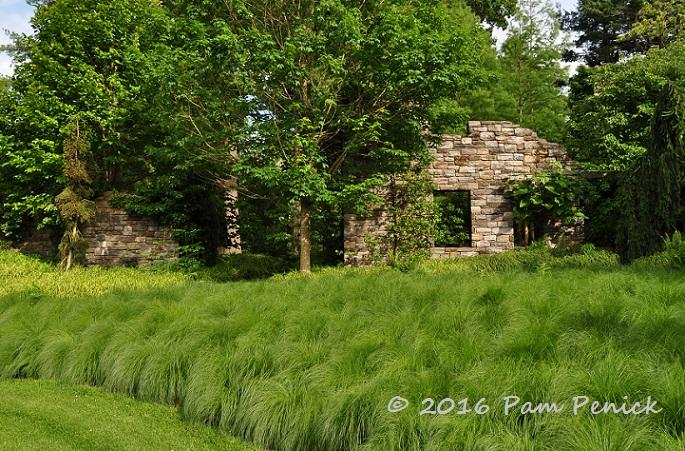
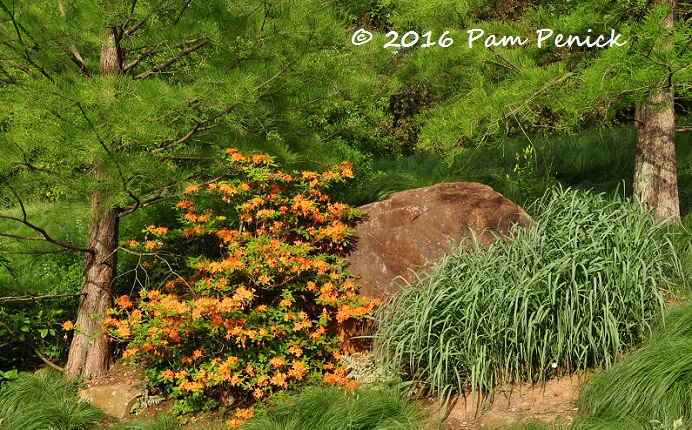
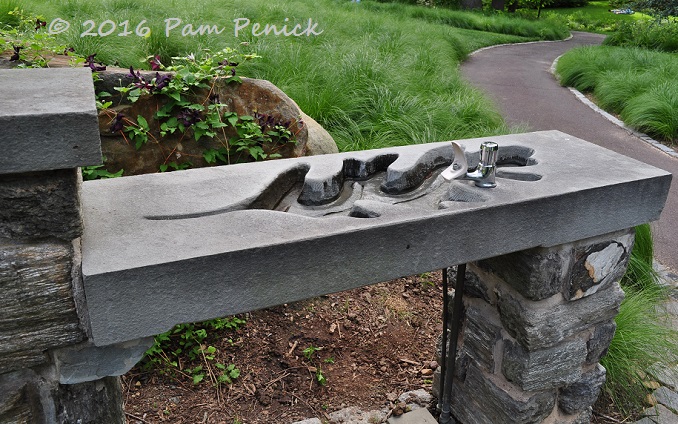
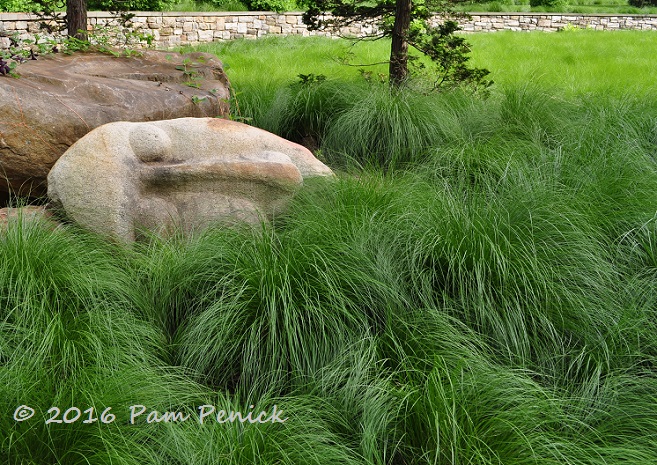
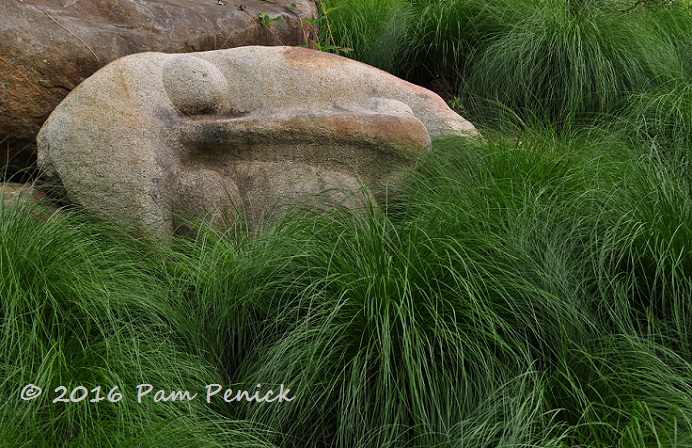
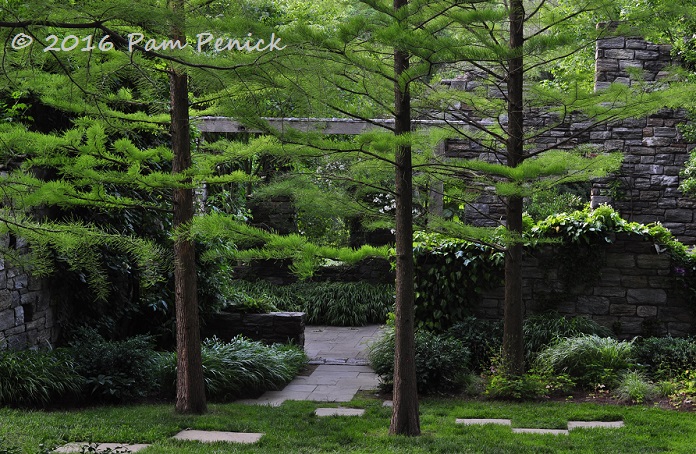
There are so many wonderful ideas here. I so want to see this garden one day.
Put it at the top of your list, Phillip. —Pam
Pam, thanks for allowing us to visit these fabulous places via your blog posts. I think you’re a wonderful writer.
Becky
Thank you, Becky! I’m really glad you’re enjoying the posts. —Pam
Ooooo, I love the ruin. I love anything that looks old and I actually like the overgrown look. Wonderful post.
I’m glad you enjoyed the tour, Laura! —Pam
What an enviable place. Even those floating heads gives one pause. I hope those little ones don’t have nightmares about floating heads.
I’m sure they loved it, as my kids did when they visited 8 years ago. It’s a magical place. —Pam
The “house” ruin reminds me of the fake ruin at Festival Hill herb garden.
I haven’t seen that one, Peter. —Pam
Now where can I squeeze a ruin into my garden???…
Isn’t it marvelous? Does it remind you at all of Bella Madrona? —Pam
(sorry Pam, no way to delete that last comment and I need to comment again to get my name/link right…)
I didn’t realize the tile “rug” was left from the original house; nice. Some parts of the ruin are just wonderful, especially the window-framed views and trees espaliered to look like vines.
But when I visited, the tomb-like “water table” creeped me out big-time, and the Marcia Donohue faces even more so (all of them, but especially those submerged ones). I had to flee to the sunny gravel garden to shake off the effects.
The overgrown look now is beginning to cross the line to truly overgrown, but I’m sure pruning will bring it back to the desired balance. Twelve years ago the foliage covered so much less of the still-stark-new-looking walls that the “ruin” effect was much less convincing; time has done its work.
“Time has done its work” — that’s truly the lesson here. Thanks for sharing how the garden has changed since its earlier days, when you saw it. —Pam
I think this post is possibly the best post you have ever written. I just wanted to be there….in all it’s wonder! Oh my goodness…..thank you for your gift of writing and sharing the gardening world with this New Braunfels girl! Pamela Graham
How lovely to hear that you liked it so much, Pamela! Thank you for your kind compliment! It’s truly my pleasure to share these gardens on my blog, and feedback like yours is wonderfully sweet icing on the cake. —Pam
I’ve seen photos here and there of Chanticleer’s Ruin Garden, but never a post that explored it so thoroughly as this. Thanks so much for sharing so many photos. This was divine.
Yay, I’m so glad you enjoyed it! Thanks, Alison.
My first time to “thee Ruin” and wanted to just sit and feel…sadly, was with a group and all most/did miss soo much.
I truly was left with..Must come back alone… truly a great work of feeling and art..
One visit to Chanticleer is never enough. I hope you are able to return soon, Audrey. —Pam